The majority of homes with open fires within traditional fireplaces use coal as a fuel source. When ignited, coal reaches a very high temperature, but it is a fossil fuel with poor environmental credentials. We examine coal fire temperature in detail below.
Coal fires ignite at a temperature of about 572°C. Once it ignites, it can reach temperatures of about 2500°F during combustion. They usually require a heat source to ignite, for example, an already burning fire or a stick of matches. Coal ignites at a higher temperature than wood, and burns hotter.
This article will go into detail on the maximum temperature of coal, its ignition temperature, and how it compares to other fuels.
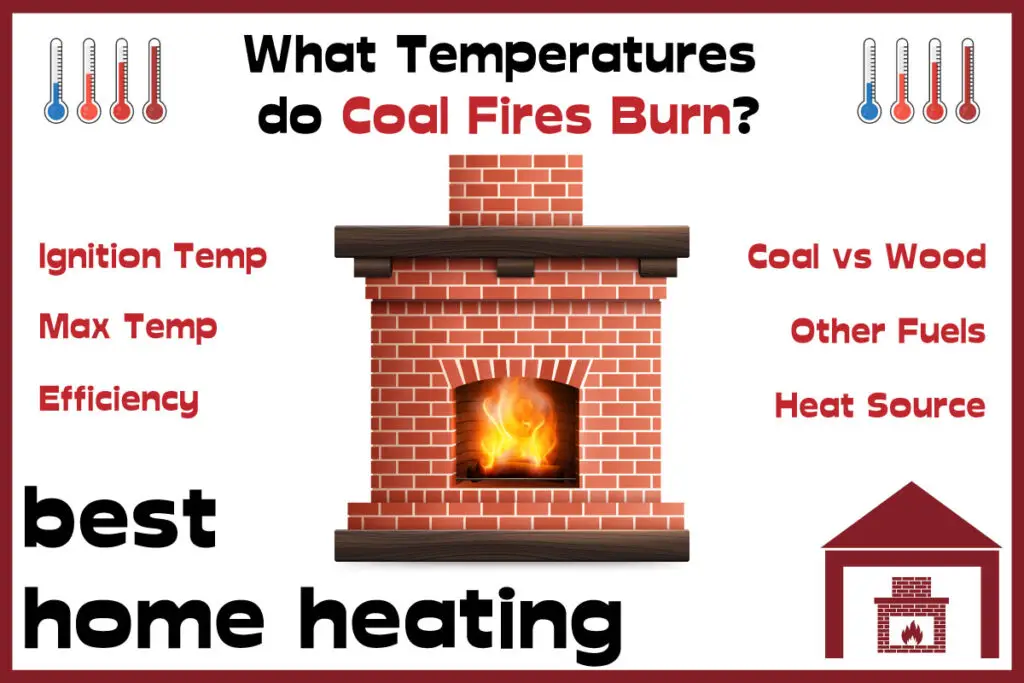
What is the Maximum Temperature of an Open Fire Burning Coal and Wood?
Coal fires ignite at 572°F and can reach temperatures of about 2500°F during combustion. During the combustion of coal and wood, the maximum temperature of the fire is usually around the maximum temperature of the combustion of coal.
You can get the perfect combination by burning coal and wood at the same time. While coal lasts longer and generates more heat than logs, the latter smell better and looks much nicer in your wood burner.
By combining the two fuels, you can make sure that your fire burns hotly for a long period (coal) while still emitting the same pleasingly woodsy odor of a log fire. Additionally, compared to a pure coal fire, the overall cost of the fire will be less.
Using coal and logs together incorrectly might lead to issues. You must be aware of the potential dangers of combining both if it is not done correctly. First of all, it’s crucial to remember that not all fireplaces and stoves are made to take more than one kind of fuel.
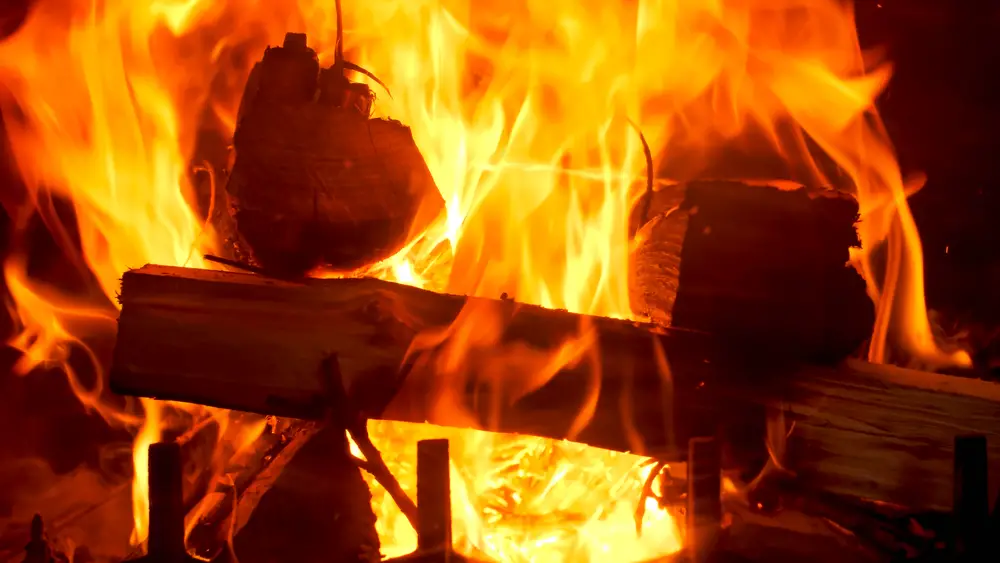
When using the incorrect fuel in a fireplace or other fuel-burning appliance that isn’t made to handle it, damage may result. Compared to coal, coal burns much hotter. Burning coal in your brand-new, Woodburner will cause the grate to fracture (it will also invalidate your warranty). Before you use yours to blend coal and wood, make sure it can handle numerous fuel kinds.
Similarly, you should be aware that not every kind of log and coal combination is appropriate. Ideally, you should only use smokeless coal (Anthracite) and extremely dry logs, like those that have been kiln-dried.
This aids in reducing smoke production and ensures that the fire doesn’t release any harmful gasses, which can be an issue if you use very impure coal or logs with an excessive quantity of moisture. Indeed, burning authorized smokeless fuel is advised for almost all multi-fuel stoves.
How Hot is a Coal Fire When It Turns Red?
Coal Fires turn red when their temperature is between 1650 and 1800°F. At this point, the fire burns vigorously in the presence of a steady supply of oxygen. Still, the combustion is classified as incomplete, because the fire is only red. Only fires with blue or white color indicate complete combustion or close to it.
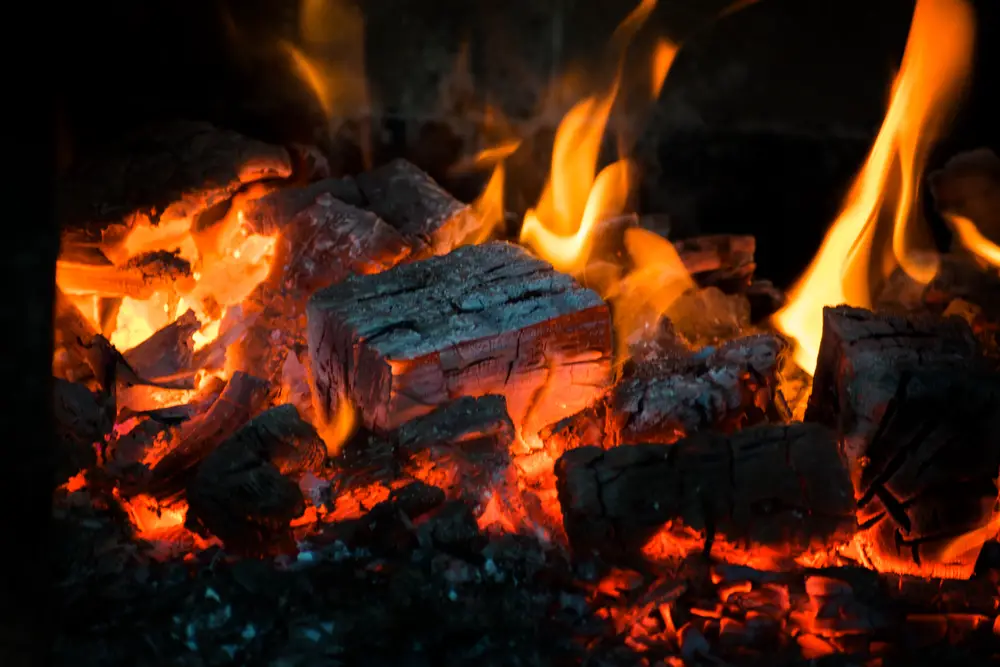
Do Coal Fires Need a Certain Ignition Temperature? Does it Matter?
The ignition temperature of a fuel is the minimum temperature required for it to burn. If the ignition temperature of a fuel is not met, it cannot burn.
Coal requires an ignition temperature of about 300C for it to catch fire, if this temperature is not attained, it cannot burn. Once the coal ignites, combustion occurs at that spot and is transferred to the entire piece of coal
In most cases, the ignition temperature is usually attained with an external fire source.
How Hot Does Coal Burn vs Wood
Coal burns hotter than wood. Anthracite coal burns at temperatures above 2500°F and can attain temperatures of 3500°F with a steady supply of air.
The Red Oak firewood which is the hottest burning firewood can burn at temperatures above 1600°F. Other wood variants like pine wood burns at around 1000°F. The temperatures achieved by burning wood and coal depend on the supply of air to the fire. This affects the overall efficiency and temperature of the heat generated.
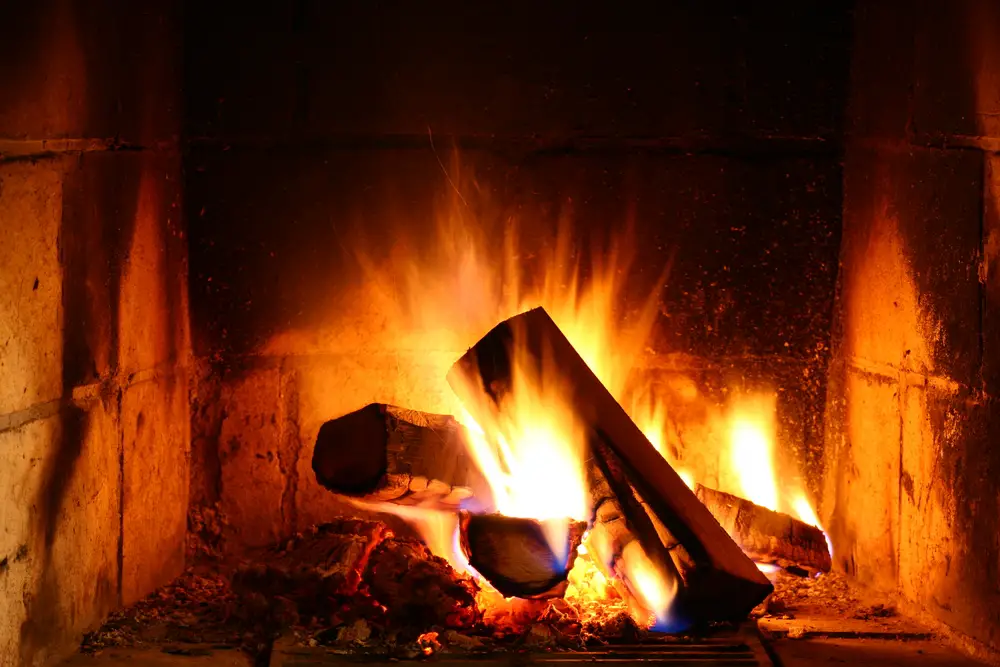
Coal is a dense energy source, which explains why it burns efficiently and produces more heat. Additionally, it indicates that compared to a wood-burning device, a coal-burning appliance may provide two times as much heat each hour.
In essence, you may get more value out of your coal by burning it for longer. One ton of coal, which contains 26,000,000 BTUs of heat energy, requires an equivalent cord and a half of wood to match it.
Wood pellets have a lower energy density and a BTU content of around 7,000 per pound or 14,000,000 per ton. At 20% moisture content, cordwood (red oak) has an energy value of 6,388 BTUs per pound or 12,766,000 BTUs per ton.
Since the moisture content will have a significant impact on the weight, determining the energy value of a cord of wood is challenging. Usually, a cord of timber can weigh more than two tons.
How Hot are Fires that Use Coal Alternatives
Some of the alternatives to coal for fires include wood, propane gas, natural gas, and sawdust briquettes. The temperature of their fires includes the following:
| Fuel | Temperature(°F) |
| Wood | 600-1652 |
| Propane Gas | 3560 |
| Natural Gas | 3,400 and 3,600 |
| Sawdust Briquettes | 930.56 |
| Butane | 3,578 |
Open Coal Fire Temperature vs Closed Stove Coal Fire?
Regardless of the fuel type, closed stove fires will generate more heat than open fires. Stoves are designed to take in controlled amounts of air which in turn allows the fire to burn hotter. As a result, the combustion of the fuel is much more thorough, which leads to more energy being emitted in the form of heat.
For open fires, the forces of convection work against the heat generated in the open fire. This is because most of the hot air generated is sent up into the chimney which causes a stronger pull of air through the fireplace known as draft.
This draft also causes the fire to burn more quickly. As the fuel burns quicker, it leads to incomplete combustion. This means that the full energy potential of the fire is not achieved and the fire cannot produce as much heat as it would in a controlled environment.
Ultimately, the efficiency of stoves is usually about 80% and that of an open fireplace is at about 25%. This means that stoves would generate three times more heat than open fires with about one-third of the fuel fireplaces would require.
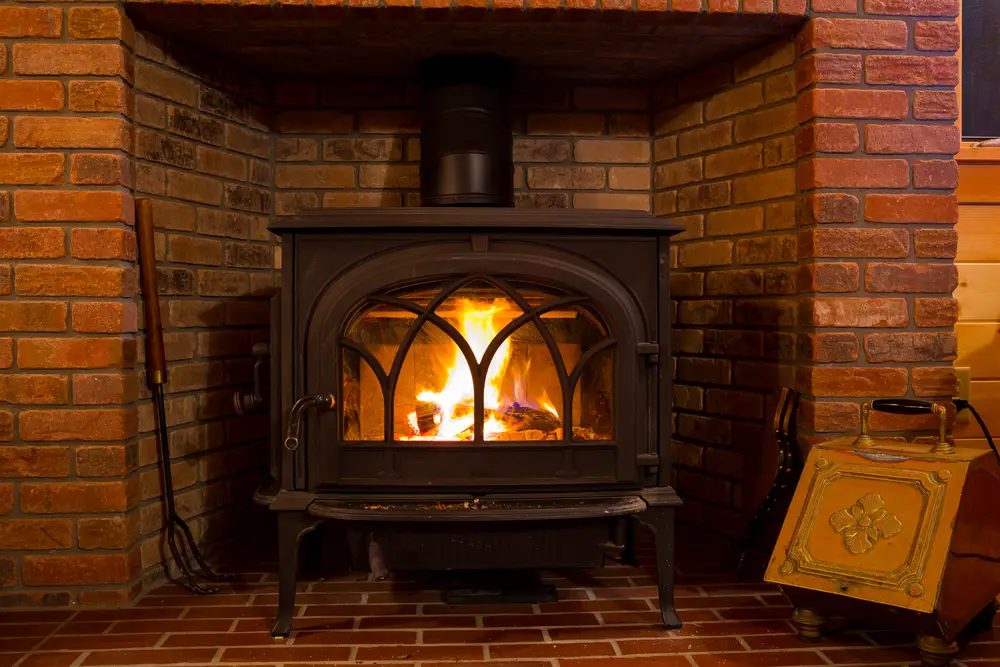
How Do Open Fires Heat the Room?
Open fires within traditional fireplaces transfer heat by a process known as radiation. The flames, hot coal, and burning logs, transmit heat rays that hit objects and people within the room. These rays of heat speed up the molecules of the people and objects around the fire and as a result warm them up.
The closer the object or the person is to the fire, the greater the heat intensity felt.
Also, some traditional fireplaces transmit heat through the principle of convection. This is also one of the reasons why they could be inefficient.
The larger portion of the heat generated from open fires is usually in the form of hot gases and large portions of these gases are sent up into the chimney where they are wasted.
This creates a phenomenon known as drafts which draw warm air from inside the room that the fire needs to burn and pull the hot air up the chimney. As a result, the room gets colder than before. Although this occurs when the chimney cap is open.
Conclusion
Coal is a very dense energy source and as a result, it is very efficient. Coal burns much hotter and is more efficient than wood in open fires.
If you are planning on installing a heating system that burns coal, it is much more advisable to get a stove than install a fireplace. This is because the efficiency of the stove is at least 3 times greater than that of the fireplace.
Open fires work on the principle of radiation which is one of the limitations of the system. Since it works on radiation, the amount of heat you feel is based on how close you are to the fire. There are also forces of convection at play that also limits the efficiency of the system.
There are heating systems that burn coal and wood simultaneously. This fuel combination helps to make up for the shortcomings of each fuel choice. The maximum temperature attained by fire is usually closer to the maximum temperature of burning coal.
Also, before combining wood for your fireplace or stove, ensure your heating system can properly combust the fuel. You should also make sure that the wood and coal are compatible with burning.
